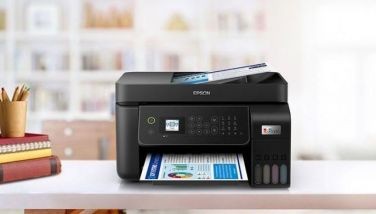Mobile banking users to hit 1.8 B by 2019
MANILA, Philippines - Use of mobile banking is forecast to explode from 800 million users in 2014 to 1.8 billion by 2019.
Based on separate reports by KPMG and Juniper Research, mobile banking is the execution of banking services and transactions using a mobile device, such as a mobile phones or tablet.
Almost all banks today have some kind of mobile banking offering, either developed in house or by making use of third-party specialist vendors.
Adoption rates are highest in so-called developing countries – reaching 60 to 70 perecnt in China and India – rather than developed nations, such as the US, Canada and the UK.
The mid to late-thirties is currently the key demographic for mobile banking, reflecting a sweet spot of technological comfort and relatively high economic activity, driving very high relevance of mobile banking services, and, therefore, the highest adoption rates.
The average age of mobile banking technologies are in the mid-30s with India showing the early adoption with an average age of 30 years old and 39 years old in countries like Italy and Spain.
In fact, the studies show mobile capability is already a key factor in the selection of a new bank for switchers.
In developed countries, mobile banking services are bank-led, while in developing countries it is the telecommunication companies (telcos) that take the lead.
Among the developing countries, the Philippines was among the first to adopt mobile banking technology.
The KPMG study said young consumers in the Association of Southeast Asian Nations (Asean) welcome non-traditional alternatives for financial services.
It is more pronounced in Southeast Asia where the drive for financial inclusion is aided by mobile technologies.
“Across Asean, parts of the population that have previously never been well served by financial institutions, together with the many new adults entering the consumer society every year, are now becoming new banking clients – and they are quite different from prior generations of banking customers. They are less loyal, eager to try new things, demand personalized services and expect a broad range of products suited to their lifestyle and personal circumstances. They are not intimidated by technology, can be easily influenced by their peer group, and expect high levels of transparency, convenience and mobility in the services they consume,” the report said.
In the region, mobile phone penetration approaches 100-percent of adults.
Asean banks jostle and maneuver in preparation for increased economic integration as part of the Asean Economic Community (AEC), the report said.
KPMG said several regional telecommunications firms (such as Globe Telecom in the Philippines) and retail companies have successfully launched digital banking services – especially around mobile payments and foreign exchange.
They, too, are looking at how they can repeat these experiences more broadly in the region as the AEC approaches. Competition is also coming from elsewhere within the Asia/Pacific region – in recent years, Japanese and Australian financial services firms have either moved into the region directly or through M&A, and Chinese banks are sure to follow.
Competition is also coming into Asean from across the globe, as the world-leading banks size up their options to enter Asean markets in a low-cost, low-risk ‘pure digital’ operating model: large established banks can take as much advantage of new digital operating models as any small start-up can.
- Latest



























